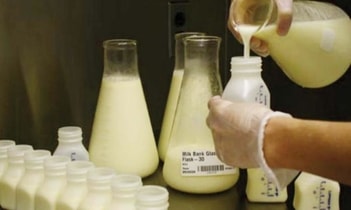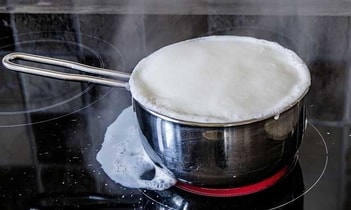ShopApni News
Is Your Dairy Toxic?
Dairy products are one of the most common foods consumed around the world. Some cultures survive on diets consisting of up to 80% raw cow, goat, &/or sheep milk. In the western world, however, dairy has become one of the most inflammatory foods. A recent discovery shows that a genetic shift in the casein molecule has produced a powerful toxin linked to numerous disorders and diseases.
Milk contains two primary protein molecules: whey and casein. Casein makes up about 80% of the protein in the milk. Casein is made up of 209 amino acids strung together in sequence. The 2 primary forms of casein are: A1 Beta Casein and A2 Beta Casein. These 2 are nearly identical in structure except for the amino acid at position 67. A1 contains histidine while A2 contains proline.
Boiling of milk: a good Indian practice
There are millions of bugs in milk, they are so tiny that we need microscope to see them. Because of their micro size, they are called Microbes or Micro organisms (i.e., bacteria, yeasts and mold).
These microbes are diverse in everything, from their size, shape and their motility to their nutrient requirement. As milk is composed of many types of nutrients, you will find microbes eating any one of those nutrients.
Farming at your place
History of thousands of years of human migration tells us that homo sapiens have always been in search of better locations for living their lives. Better in terms of food security, ecology, law and order etc. The process of migration which began 70,000 years ago, when homo sapiens moved out of Africa, continued for 40000 years. History notices it as first wave of migration.
History has observed several such waves of migration.
Urbanization can also be seen as one of the waves which began in England during Industrial Revolution of Britain and is still hitting the shores of various countries across the world.
Lactose intolerant? Consume Dahi!
If you consume milk and it causes indigestion which is associated with vomiting, gas, nausea and loose motion, you are most certainly suffering from lactose intolerance. Yea… remember, if you don’t like smell or flavour of milk, then you are not lactose intolerant, you just don’t like milk!
If you are facing lactose intolerance, then instead of removing entire dairy from your meal, you should consume fermented dairy products, for example, Dahi, Curd, Sour milk, Matha etc.
Paneer vs Cheese
Most of the time I have been asked if Paneer and Cheese are same?
My reply is, “NO”!
However, dairy industry consider them same but I have significant reasons to say that they are different.
Cheese is a product of European origin. Rather, I should say, ‘they are’ products of European origin. There are more than 500 listed varieties of cheese. To prepare them, first, milk is cultured by some specific bacteria to raise acidity of milk with production of lactic acid. After this, rennet enzyme (an enzyme extracted from fourth stomach of calf) is added to it to give curd a thicker and particular consistency. After these steps, further steps may vary. Some cheese are further salted, waxed, sprinkled with spores or ripened. ‘Ripening’ is the key factor for specific flavour and texture of cheese. Some cheese are not ripened and they are called Fresh Cheese.










